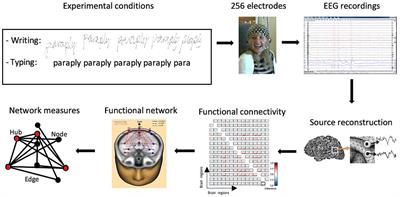- The Friday Mindset
- Posts
- Friday Mindset #116
Friday Mindset #116
Helping students get better at studenting
Hey, Friday!
*engages in elaborate handshake, year 11 lads-style*
What a week. We’ve finally submitted The VESPA Handbook for its last typesetting. Lovely pre-publication reviews are being added to the back cover. It’s nearly here! Please consider pre-ordering. We’d owe you a life-long debt of gratitude, honest…
Right, enough of the soft sell, let’s dive in.
Something to try...
A powerpoint presentation for you today.
We’re often asked to run staff CPD about evidence-based revision at this time of year (say hello at [email protected] if you want to book one in!) Whenever we run those sessions, we use a series of resources attached to practice activities across our three (soon to be four) books.
Here’s a brief exploration of an activity from The A Level Mindset. We have very fond memories of this particular practice activity because at the end of the academic year in which we first introduced it, a remarkable and memorable student, (a real character,) came up to us and said, with a mischievous grin, “you guys have talked a lot of crap this year… but that activity, ‘Two Slow, One Fast’ - that was mint.”
He used Two Slow, One Fast a lot. Ended up with fantastic grades, and we reckon there was a connection. Here’s an introduction to the idea of practising slowly, then speeding up.
A quick reminder - the video won’t play until you download the powerpoint. Hope it’s useful!
Something we're reading...
We promised this last week - a study examining whether information is encoded better if a student types or handwrites it.
It’s a real neuroscience geek-out, folks. Here’s a brief extract…
“A recent EEG-study from our lab showed that drawing by hand causes more activity and involves larger areas in the brain as opposed to typing on a keyboard. We concluded that the involvement of fine and intricate hand movements in notetaking, in contrast with pressing keys on a keyboard that all require the same simple finger movement, may be more advantageous for learning. A follow-up study observed event-related synchronized activity in the theta range in both children and students in parietal and central brain regions, but only when writing by hand. As these studies have found evidence that writing by hand facilitates learning, the present study further investigated the neurobiological differences related to cursive writing and typewriting in the young adult brain…”
Got to say, we don’t understand much of the EEG related images and discussion. Best to scroll down to ‘general discussion’, and a section called ‘the importance of handwriting practice in a learning environment’ for the good stuff:
Our latest offer...
We have a free book for you this week!
When Seth Godin wrote Graceful about ten years ago, it was with the intention of making it a free pdf and just… putting it out there, seeing how it spread and who it touched. It’s a short, inspiring and sparsely-written piece - thirty ideas, the sub-head says, for making a difference in a world that needs you.
It’s thirty pages; you can read the whole thing in fifteen minutes. But we promise, you’ll be thinking about it for weeks afterwards. It’s a rallying cry, heartfelt and powerful. Once you’re done, share it with someone who needs to read it…
We guess, given the study we’ve shared this week, that it might be better printing out Graceful and reading your hard copy. Annotating it as you go of course!
OK. Time for a well-earned lager-shandy.
All the best to you and yours,
Steve, Tony and Martin
p.s. some generous feedback from a recent staff CPD session…

And a reminder that staff training/CPD dates are still available in the summer term. If you want a training session that…
introduces the VESPA model and demonstrates how to deliver activities
dives deep on any aspect of VESPA, such as ‘improving effort’ or ‘raising aspiration’
explores how to develop a culture of independent learning
looks at successfully coaching students
just give us a shout at [email protected].
p.p.s.
We love Liz Fosslien’s work. Here’s a wonderful image to share with students…


Reply